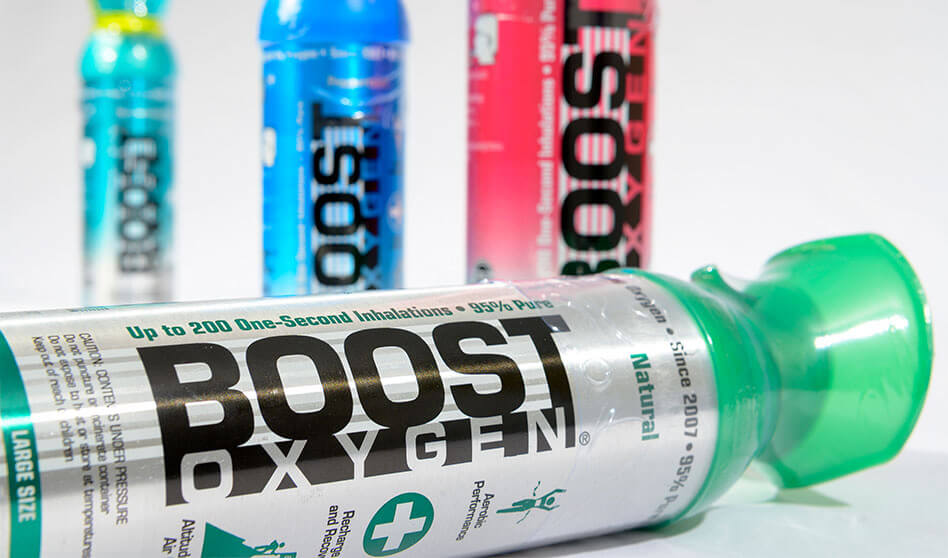The Facts: Answering Misconceptions About Oxygen and Boost Oxygen
At Boost Oxygen, we enjoy educating consumers about the benefits of oxygen. It’s our business – and we live and breathe it daily (literally!). In early 2020, we launched an entire Learning Center devoted to education about oxygen with articles, blogs, videos, research and more. It’s our mission that one day soon, our portable oxygen product will be as widely accepted as an all-natural respiratory support as Gatorade has become for hydration support.
As part of the education process, we also pay attention to comments about our product (and oxygen) on social media. The fact is, there are several common misconceptions we regularly read about Boost Oxygen – and oxygen in general – that we feel it’s important to correct.
MISCONCEPTION: OXYGEN IS FLAMMABLE
THE FACTS: OXYGEN IS NOT FLAMMABLE
The Facts: This statement is by far THE MOST common misconception we see posted about oxygen. Oxygen itself is NOT flammable and does NOT burn. If Oxygen was flammable, our entire atmosphere would be a giant fireball. But pure Oxygen CAN feed an EXISTING fire, so it’s dangerous to use any oxygen tank around something that is burning because it will help the fire burn more quickly. In other words, oxygen isn’t the problem – it’s the existing fire. Watch this video from Live with Kelly and Ryan to see the proof during their experiment involving a balloon filled with pure oxygen (the oxygen experiment starts at 2:00 into the video)
MISCONCEPTION: THE AIR WE BREATHE IS OXYGEN
THE FACTS: THERE’S ONLY 21% OXYGEN IN THE AIR
The Facts: Incorrect – the air you normally breathe at sea level contains JUST 21% oxygen. That’s right – just 21% oxygen. The majority is 78% nitrogen with the remaining 1% a mix of other gasses and pollutants. In fact, there can be less oxygen in the air at high altitudes.
MISCONCEPTION: TOO MUCH OXYGEN IS DANGEROUS
THE FACTS: ONLY IF YOU HYPERVENTILATE PURE MEDICAL OXYGEN FOR SEVERAL HOURS STRAIGHT.
The Facts: Some people who research Boost Oxygen, or just want to make fun of our product, do a quick Google search about the possible harmful effects of using too much oxygen. They find something about “free radicals” that can harm you and post it as proof. The fact is, regularly breathing pure supplemental oxygen is completely safe. Oxygen is healthy and natural. After all, you breathe nearly 500 gallons of oxygen a day! The ONLY way you could possibly be harmed by too much oxygen is if you HYPERVENTILATED medical-grade oxygen (classified as 99.2% or higher pure oxygen) for SEVERAL HOURS STRAIGHT in double the normal atmospheric pressure. That can cause irreversible lung damage and convulsions as your body simply can’t properly handle all that pure oxygen. But this is extremely unlikely and the only people who might experience such a rare situation are divers who might be trapped underwater for many hours.

MISCONCEPTION: BOOST OXYGEN IS THE SAME AS MEDICAL OXYGEN
THE FACTS: BOOST OXYGEN IS SUPPLEMENTAL OXYGEN. MEDICAL OXYGEN IS 99.2% OR HIGHER.
The Facts: Boost Oxygen is NOT the same as medical-grade oxygen. Boost Oxygen is not intended to treat or cure any illness. It’s intended for healthy people looking to enjoy the benefits of supplemental oxygen in their lifestyle. Medical oxygen that is prescribed by a doctor is classified as 99.2% or above AND REQUIRES A PRESCRIPTION. Boost Oxygen does not require a prescription. Now, there are some knockoff portable oxygen products out there that claim to be 99.5% or higher. THEY ARE NOT BEING TRUTHFUL. If they were indeed 99.5% or higher, they would require a prescription for purchase. They are in fact (GASP!) being disingenuous. (One knockoff in particular also tries to fool you into thinking they are FDA approved by claiming they are “Made in an FDA-registered facility” – but that doesn’t mean their product is FDA approved. No portable oxygen product is FDA approved. Boost Oxygen is tested yearly by one of the top labs in the country for our oxygen content.
MISCONCEPTION: BOOST OXYGEN IS JUST CANNED AIR
THE FACTS: BOOST IS PURE OXYGEN. AIR CONTAINS ONLY 21% OXYGEN.
The Facts: As explained above, the air we breathe contains just 21% oxygen. Boost Oxygen is pure supplemental oxygen and contains nearly 5X the oxygen we normally breathe. What is the other 5% you might wonder? The other 5% is “ambient air” which is the air you are breathing normally right now.
MISCONCEPTION: YOU NEED A PRESCRIPTION TO BUY BOOST OXYGEN
THE FACTS: BOOST IS NOT MEDICAL GRADE, NO PRESCRIPTION IS REQUIRED.
The Facts: Again, as explained above, a prescription is required to purchase medical-grade oxygen which is 99.2% or higher pure oxygen. Boost Oxygen is pure supplemental oxygen and does not require a prescription to purchase. Boost Oxygen is widely available at major retailers across the country like CVS and Walgreens.
MISCONCEPTION: MY BOOST OXYGEN CANISTER ARRIVED EMPTY
THE FACTS: OXYGEN IS A LIGHTWEIGHT GAS, SO OUR CANISTERS FEEL VERY LIGHT.
The Facts: Our final misconception is commonly heard by our customer support specialists during phone calls by new customers. When some people receive their Boost Oxygen canisters, they mistakenly think the canisters arrived empty because they are so lightweight. Rest assured, each canister is VERY FULL of pure oxygen. The canisters are lightweight because oxygen gas is very lightweight. We’ve been asked why we don’t add “fake weight” to our canisters to make them feel heavy and full, but that would be disingenuous and would only raise the cost of our product for consumers. We’ve also placed a sticker on our canisters explaining that it is naturally lightweight and NOT empty!













